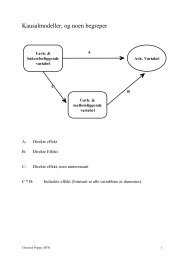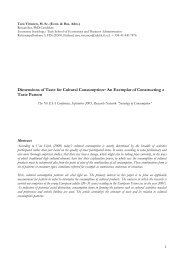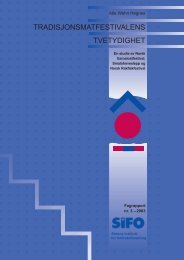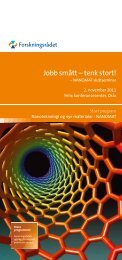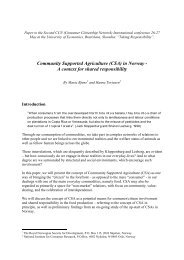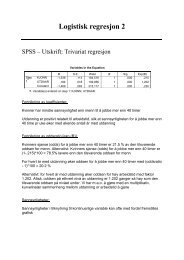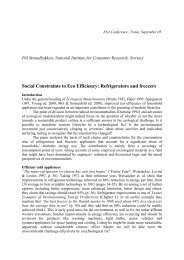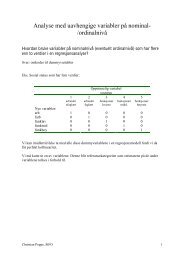an investigation of domestic laundry in europe - habits ... - SIFO
an investigation of domestic laundry in europe - habits ... - SIFO
an investigation of domestic laundry in europe - habits ... - SIFO
Create successful ePaper yourself
Turn your PDF publications into a flip-book with our unique Google optimized e-Paper software.
80An <strong><strong>in</strong>vestigation</strong> <strong>in</strong>to the <strong>domestic</strong> <strong>laundry</strong> <strong>habits</strong> <strong>in</strong> EuropeBacillus cereus colonies are p<strong>in</strong>k <strong>an</strong>d surrounded by a zone <strong>of</strong> precipitation.Suspected colonies are plated on MYP/PREP <strong>an</strong>d aga<strong>in</strong> <strong>in</strong>cubated for one dayat 30°C. The result is considered positive if the colonies are p<strong>in</strong>k <strong>an</strong>d surroundedby a zone <strong>of</strong> precipitation. It is also possible to see Enterococcus faecalison these plates. These colonies are yellow, glossy <strong>an</strong>d sized 0.5mm.Enumeration <strong>of</strong> the Total Plate Count1 ml <strong>of</strong> the serial dilution is tr<strong>an</strong>sferred to a plate <strong>an</strong>d mixed with ca 15mlPCA (Plate-Count-Agar, Merck, 5463). The plates are <strong>in</strong>cubated for threedays at 30°C. Every visible colony on this plate is counted.Enumeration <strong>of</strong> yeast <strong>an</strong>d fungi0.1ml <strong>of</strong> the serial dilution is spread on <strong>an</strong> OGGA-plate (Biotrad<strong>in</strong>gK1042090) <strong>an</strong>d <strong>in</strong>cubated for 5-7 days at 25°C. Dur<strong>in</strong>g this period the platesare checked on the third day <strong>an</strong>d the yeasts are counted. This is done <strong>in</strong> orderto see the yeasts before they are overgrown by fungi.4.3.8 CalculationThe number <strong>of</strong> micro-org<strong>an</strong>isms is calculated accord<strong>in</strong>g to normal microbiologicalrules.NNΣ<strong>an</strong> 1n 2d∑ a=( n + 0, n ) d112= number <strong>of</strong> colonies= sum <strong>of</strong> the number <strong>of</strong> counted colonies= number <strong>of</strong> plates <strong>in</strong> first dilution= number <strong>of</strong> plates <strong>in</strong> second dilution (less diluted)= dilution rate correspond<strong>in</strong>g first dilutionPlates with one or two colonies are considered negative, as these f<strong>in</strong>d<strong>in</strong>gsmight be due to cross-contam<strong>in</strong>ation dur<strong>in</strong>g the test. A negative result is writtenas




